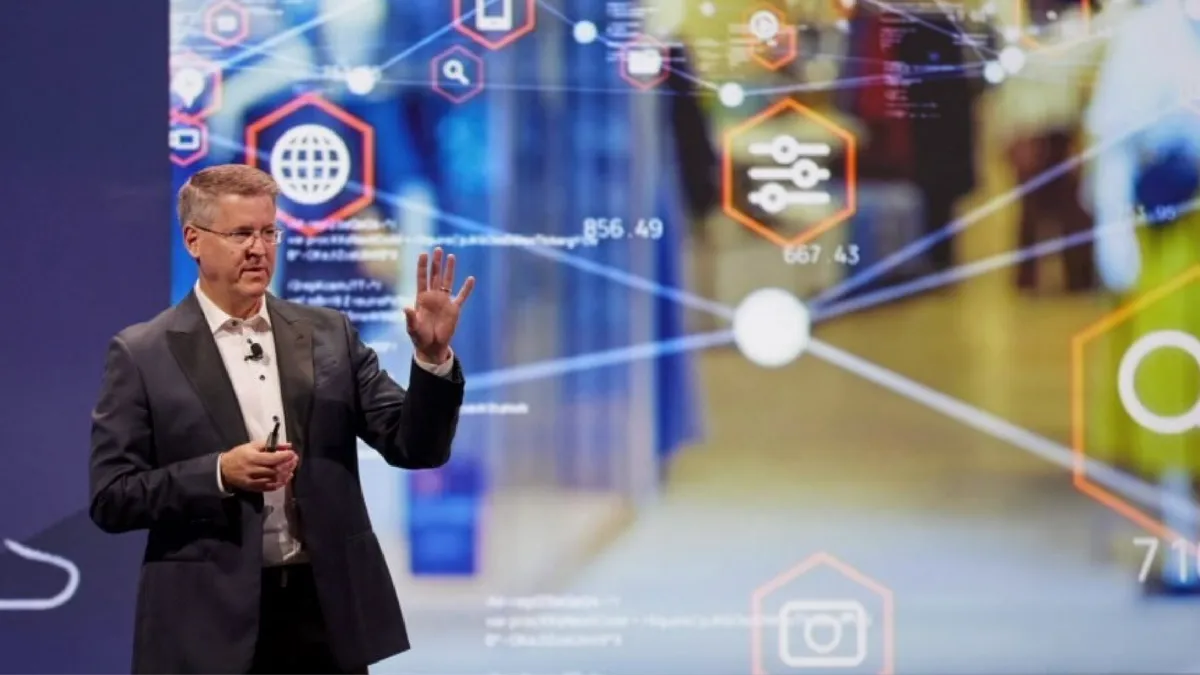Based on conversations we are having with retailers, customers, prospects, analysts and industry experts, we have identified five key trends driving new imperatives. Senior Vice President and General Manager of Oracle Retail, Mike Webster, shared his perspective at Oracle Retail Cross Talk 2022 in Dallas.
Here's what you may have missed:
1) Consumer spending: changing shopping behavior and rising expectations
The global pandemic has forever shifted the way consumers shop and how retailers respond to change. Consumers began shopping differently. As economies reopened, we saw another shift. Innovations emerged out of necessity during the pandemic. Some of these new service models are now here to stay.
Consumers will always evolve the way they shop and the way that they engage with a retailer. We are still seeing an increase in digitally influenced revenues that we think is about 25% of all retail sales which translates to about $8 trillion. For example, in China, sales of digital influence or a digital touchpoint at some point during a customer journey are about 50% penetration.
This trend will continue, and we have recognized that retailers still have difficulty aligning their channels to a consistent shopper or customer experience. This makes it difficult for retailers to get into new service models, such as recycling and subscriptions, rental models, and direct-to-consumer. At the same time, the consumer expects personalization. They expect their preferences and expectations to be met with personalization, and they are now starting to demand transparency. They want to know where products originate from, who made it, how it was delivered and whether it was produced sustainably.
2) Supply chain management: disruptions and constraint-based planning
This market volatility and abrupt shift in consumer behavior impacted the supply chain and forced retailers to rethink their fulfillment models, streamline their assortment and rethink their supplier network to meet consumer demand. Variability requires a more accurate forecast and agile supply chain management with sharper profitability analysis.
Supply chain disruptions are a reality and may continue for quite some time. Retailers must prepare for that dislocation of supply logistics. Retail supply chains will need to be reconfigured because of these global disruptions. Visibility is critical for retailers to meet rising expectations. Despite this being critical, many retailers lack a real-time view of their supply chain and cannot address supply chain constraints as quickly as possible.
Effective retail supply chain management could be worth several percentage points of profitability. Align planning decisions to demand forecasting, inventory management, and receipt flow to drive profitable allocation and replenishment, supply chain execution and order fulfillment.
3) Economic uncertainty
Consumer spending is starting to be impacted by inflation. The cost-of-living crisis is starting to impact disposable income, which for some retailers is reducing their sales and revenue. For other retailers, it's causing product switches - people are trading down or going elsewhere. Change is happening, and inflation is impacting costs for retailers.
With increased costs in retail operations, retailers are faced with squeezing from the consumer expectation side and the retail business cost side. When consumers were asked if rising prices and inflation impact their shopping, 46% reported they would buy less while 54% would shop for deals and discounts. With retail inventory planning and management, leading companies define assortment, placement, pricing, promotions and product lifecycles for maximum profitability at a time when productivity and profitability matter most.
4) People and productivity: attracting and retaining talent
Operating procedures spanning labor, buying, forecasting and merchandising must adapt to meet new consumer expectations. It's been increasingly challenging to attract and retain the right people. When retailers need help, it is essential to establish modern and engaging workplaces where employees have the right tools, automated workflows and the data they need to do their jobs. There's a particular opportunity around creating an employee experience that attracts the right people to a retail organization.
Best-in-class human resource technology allows you to recruit, onboard, educate and retain employees. Ultimately, the goal is to turn front-line staff into loyal brand ambassadors who delight customers to drive long-term loyalty. For the operational team, the day-to-day experience should be supported by sophisticated technology and a modern user experience.
We build a single access point called Oracle Retail Home, designed for productivity with automated workflows based on roles and responsibilities. A simplified experience empowers teams to manage by exception and deliver against KPIs that matter.
5) Meeting and measuring ESG and sustainability goals
Sustainability isn't something that sits on the side of a retail business any longer. It's not a third-party or governance responsibility. It is now expected to be woven into every business process that a retailer undertakes - how they plan, how they buy, how they move, how they sell and how they attract customers. Retailers need better transparency, and this represents a growth opportunity. 79% of consumers say that a retailer's transparency about product information and sustainability is important. It's more than just compliance and reporting, and the focus should be on the outcomes for retailers. Sustainability efforts are an opportunity to increase margins. Some consumers are willing to pay more for sustainably and ethically sourced products. And there's also the ability to take cost out of the supply chain while improving the sustainability and environmental side of things.
With these five key trends as the driver, every engagement with global retailers focuses on these three strategic imperatives to enable retailers.
- Get closer to the customer - Customers should be in a retailer's data model to better understand wants and preferences and use customer data throughout the process.
- Build a blueprint for agility - The pace of change continues to increase. Retailers need agility in their operations, and Oracle Retail can help build that blueprint.
- Create space for innovation - Retailers need to create innovation in retail processes and their people, but this requires freeing up resources to help drive innovation.
Retailers that can standardize processes around proven best practices and enable their teams with the right AI and machine learning tools will react quickly and build a blueprint for agility to serve their customers with the experience they prefer. And retailers that can leverage the power of a retail platform will stay on top.
Learn more; listen to Mike Webster's keynote from Cross Talk










